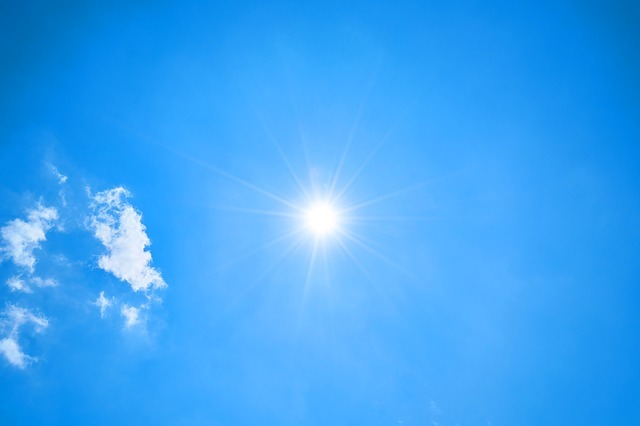A new study investigates the potential impact of climate, specifically hot temperatures, on the risk of developing kidney stones.
The kidneys are a very important organ, and they play an essential role in keeping the body healthy and in balance. However, a variety of conditions may impact their ability to perform optimally. One of these conditions is kidney stones; these occur when small clumps of minerals and salts form in the kidney or urinary tract, blocking the flow of urine from the system.1 The symptoms can range significantly, but in many cases, kidney stones are associated with severe pain and may require medical treatment.1
Kidney stones are a relatively common condition, affecting almost nine percent of people in the United States.2 A variety of factors may also be associated with an increased risk of kidney stones, including the presence of diabetes or obesity, as well as being male.2
Some evidence suggests that hot climates may also be associated with an increased risk of kidney stones, as the risk of kidney stones is generally higher in U.S. cities with warmer annual average temperatures .3,4,5 Although the reason behind this potential relationship is unknown, some researchers speculate that it could be due to altered hydration levels and urine output with higher external temperatures.5
This could have a greater significance in the future because global warming is contributing to an overall shift towards warmer climates. In order to further investigate the potential implications of this relationship, a study was performed in South Carolina.5 The results were published in Scientific Reports.
First, researchers used historical data to estimate the strength of the association between temperature and kidney stone risk in cities within South Carolina.5 To determine historical temperature, researchers used the daily state-wide mean wet-bulb temperatures from January 1, 1997, to December 31, 2014.5 This is a measure of temperature that factors in humidity as well as outside temperature.5 To measure kidney stone risk, researchers used the number of kidney stone admissions to South Carolina emergency rooms from this same time period.
Next, two theoretical climate change scenarios were mapped out; one scenario represented the temperature changes that might occur if society adopted more environmentally sustainable practices, and the other represented what might occur with no changes in society’s practices.5
Although both scenarios predicted a temperature increase, the second scenario predicted a larger increase in temperature than the first, given the higher level of theoretical greenhouse gas emissions. The historical association between temperature and kidney stone risk was then compared with these two scenarios to measure the theoretical kidney stone risk at certain temperatures.
Researchers found a significant increase in kidney stone numbers between 2025-2089 with both scenarios; however, the second scenario representing greater temperature changes was associated with a larger increase in kidney stones.5 Moreover, the study found that the overall risk of kidney stones in South Carolina historically increased within ten days following a higher state-wide average daily temperature.5
A significant increase in kidney stone risk may compromise the health of individuals, as untreated kidney stones are associated with potential complications including severe pain, infections in the kidney and urinary tract, and impaired kidney function.6 Furthermore, it could place a burden on the healthcare system overall, as the treatment and complications of kidney stones may take up already scarce hospital resources. The study estimated that this increase may be associated with costs of over 56 million and 99 million dollars between 2025 and 2089, for the first and second scenarios, respectively.5
The results of this study suggest that the temperature increases caused by global warming could potentially be associated with increased kidney stone risk and financial burden. More research is needed to further investigate this association, as well as determine ways to ultimately minimize the impacts of global warming on the health of humans, other species, and the planet.
References:
- Johns Hopkins Medicine Health (n.d.). Kidney Stones: Overview. Johns Hopkins Medicine: Johns Hopkins University, Johns Hopkins Hospital,5 and Johns Hopkins Health System. Accessed 2022, January 11, from https://www.hopkinsmedicine.org/health/conditions-and-diseases/kidney-stones
- Scales, C.D., Smith, A.C., Hanley, J.M., et al (2012, July). Prevalence of Kidney Stones in the United States. Eur Urol 62(1): 160-165. Doi: 10.1016/j.eururo.2012.03.052
- Brikowski, T.H., Lotan, Y., Pearle, M.S. (2008, July 15). Climate-related increase in the prevalence of urolithiasis in the United States. PNAS 105(28): 9841-9846. Doi: 10.1073/pnas..070952105
- Tasian, G.E., Pulido, J.E., Gasparrini, A., et al (2014, October). Daily mean temperature and clinical kidney stone presentation in five U.S. Metropolitan Areas: A time-series analysis. Environ Health Perspect 122(10): 1081-1087. Doi: 10.1289/ehp.1307703
- Kaufman, J., Vicedo-Cabrera, A.M., et al (2022, January 10). The impact of heat on kidney stone presentations in South Carolina under two climate change scenarios. Scientific Reports 12(369): doi: 10.1038/s41598-021-04251-2
- National Institute of Diabetes and Digestive and Kidney Diseases (2017, May). Definition & Facts for Kidney Stones. National Institutes of Health: U.S. Department of Health and Human Services. Accessed 2022, January 15, from https://www.niddk.nih.gov/health-information/urologic-diseases/kidney-stones/definition-facts#complications
Image by Engin Akyurt from Pixabay



